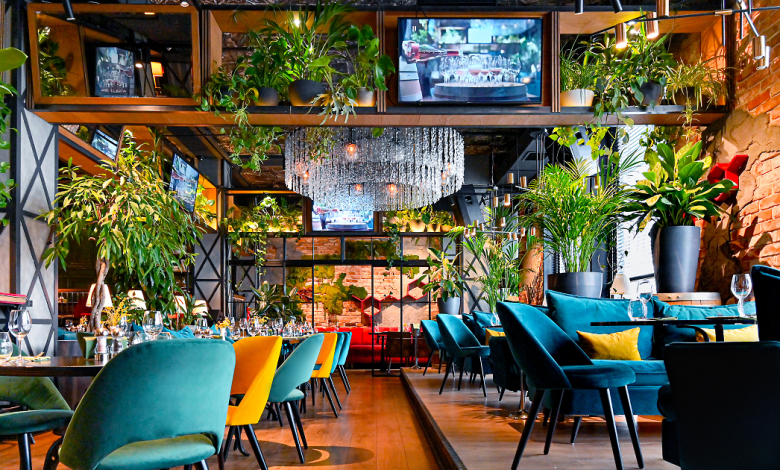The Evolution of America’s Restaurant Culture

In the bustling streets of every American city, a symphony of aromas fills the air, drawing passersby to a myriad of eateries. From cozy diners to upscale bistros, the restaurant scene in the United States has evolved into a cultural phenomenon that captivates its citizens’ hearts, minds, and palates. How did American society become so infatuated with Tomball restaurants? What factors have contributed to this culinary obsession that has become integral to our social fabric? This blog delves into the intriguing journey that has shaped America’s fascination with restaurants, exploring the historical, economic, and sociocultural forces that have propelled this evolution.
From Taverns to Gourmet Delights: Tracing the Roots
The roots of America’s restaurant culture can be traced back to the colonial era when taverns and inns served as crucial hubs for travelers and locals. These establishments not only provided sustenance but also offered spaces for socializing and exchanging ideas. Fast forward to the 19th century, urbanization and immigration transformed cities into melting pots of diverse cuisines. As America’s landscape changed, so did its dining habits. The industrial revolution shaped the “eating out” concept as factory workers sought quick and affordable meals during their lunch breaks. The emergence of the diner, a quintessentially American institution, further solidified the nation’s growing appetite for restaurant dining.
From Necessity to Leisure: The Changing Dynamics
The economic landscape of the 20th century played a crucial role in elevating restaurants from a mere necessity to a leisure activity. Post-World War II prosperity and the rise of the middle class created a demand for dining experiences beyond sustenance. The growth of disposable income meant that Americans could afford to indulge in restaurant dining as entertainment. The culinary arts began to be seen as expressions of culture and creativity. This prompted chefs to experiment with fusion cuisines and innovative techniques. The expansion of the food industry and advancements in transportation also allowed for sourcing exotic ingredients, further enhancing the allure of dining out.
Culinary Voyeurism and Social Media
The evolution of America’s obsession with restaurants can only be discussed, considering the impact of social and cultural factors. In the age of digitalization, social media platforms have transformed restaurant visits into shareable experiences. The rise of “foodstagramming” turned everyday diners into culinary connoisseurs, fostering a sense of community and connection around gastronomy. Dining out became not just about satisfying hunger but also about exploring and documenting new flavors, textures, and presentations. The fusion of diverse cultural influences in American cuisine mirrors the nation’s multicultural identity, contributing to the appeal of restaurants as windows into different worlds.
Beyond Borders: Exploring Global Flavors
As American society became more interconnected, a new dimension of restaurant obsession emerged: culinary tourism. Adventurous diners sought authentic flavors worldwide, increasing the popularity of ethnic restaurants and street food markets. The desire for authenticity prompted chefs to delve into traditional recipes, often putting modern twists on age-old dishes. This exploration of global cuisines not only broadened the gastronomic horizons of Americans but also served as a means of cultural appreciation and understanding.
The Rise of Culinary Icons and Reality Television
The 21st century witnessed the emergence of celebrity chefs who transcended the kitchen and became cultural influencers. Chefs like Emeril Lagasse, Gordon Ramsay, and Anthony Bourdain brought the world of gastronomy to the forefront of popular culture. Reality television shows like “Top Chef” and “MasterChef” showcased culinary prowess and demystified the art of cooking for a wider audience. This culinary entertainment phenomenon further fueled the obsession with restaurants as viewers became invested in the behind-the-scenes drama and creativity that unfolded in kitchens worldwide.
Navigating the Intersection of Flavor and Well-Being
As societal awareness about health and sustainability grows, the restaurant obsession, including brunch specials, has taken on a new dimension. Diners are increasingly seeking healthier and environmentally conscious dining options. Restaurants that offer organic, locally sourced, and plant-based menus, along with brunch specials, have gained popularity, reflecting a shift toward mindful consumption. This focus on wellness and ethical dining practices showcases how the restaurant culture responds to evolving societal values.
From Fine Dining to Food Delivery
While the allure of fine dining remains strong, the restaurant obsession has also adapted to modern lifestyles. The convenience revolution brought about by food delivery apps and the rise of fast-casual dining has reshaped how Americans experience restaurant cuisine. The demand for quick, accessible, and diverse options has led to the proliferation of delivery services, ghost kitchens, and pop-up restaurants. This shift highlights how the restaurant culture has evolved to accommodate a fast-paced society’s changing needs and preferences.
Culinary Adventures and Social Bonds
Beyond the mere act of eating, the restaurant culture has become a conduit for social interactions and memorable experiences. Sharing a meal with friends, family, or colleagues fosters a sense of camaraderie and bonding. Special occasions are celebrated in restaurants, making them the backdrop for cherished memories. The ambiance, décor, and service contribute to the holistic experience. This making dining out not just about the food but also about the connections and moments created around the table.
Conclusion
The journey of America’s obsession with restaurants is a tapestry woven with historical threads, economic shifts, cultural influences, and evolving values. From humble beginnings as essential hubs for sustenance, restaurants have blossomed into multifaceted establishments that cater to a spectrum of desires and needs. Whether driven by the allure of celebrity chefs, the convenience of food delivery, or a quest for authentic global flavors, the restaurant culture continues to evolve and adapt, reflecting the ever-changing dynamics of American society. As we ponder the reasons behind this culinary infatuation, one thing is clear: restaurants are more than just places to dine; they are vibrant reflections of our collective journey, serving as windows into the complex mosaic of American culture and its enduring love affair with the art of gastronomy.




